

Information Literacy Module Resources for Remote Teaching & Learning. Spotting Misinformation and #FakeNews: 10 Resources To Teach Students Media Literacy. Plan Ahead With Our Teacher Checklist. Our Collection. Where Do We Get Our News and Why Does It Matter Updated. Last updated January 08, 2020 We live in a time when it can be difficult to identify reliable news sources.

Though the term “fake news” is often used as a political weapon, the problem of stories that are reliant on sloppy journalism, intentionally misleading, or fabricated, is real. Snopes: How do you survive 25 years debunking fake news? Image copyright Stephen Osman\Los Angeles Times\Getty How do you survive 25 years in the fact-checking business?
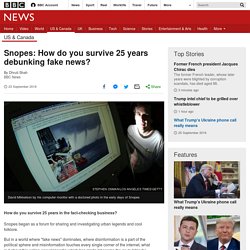
Snopes began as a forum for sharing and investigating urban legends and cool folklore. Fake News - Cranston High School East Library - RILINK Schools at RILINK Schools. This Just In! QUIZ: How Good Are You At Detecting Bias? (with Lesson Plan) Cognitive bias is basically a mental stumbling block, a kind of brain glitch that can cause flaws in our judgement. And it's the key reason that hard facts and evidence are sometimes not convincing enough to change our minds about certain deeply-held positions and beliefs. Five common types of cognitive bias Anchoring bias Relying too heavily on the first piece of information you come across Blind-spot bias Recognizing bias in others, but failing to recognize it in yourself. Evaluating Sources in a ‘Post-Truth’ World: Ideas for Teaching and Learning About Fake News.
Back in 2015, when we published our lesson plan Fake News vs. Real News: Determining the Reliability of Sources, we had no way of knowing that, a year later, the Oxford Dictionaries would declare “post-truth” the 2016 word of the year; that fake news would play a role in the 2016 presidential election; that it would cause real violence; and that the president-elect of the United States would use the term to condemn mainstream media outlets he opposes. Back then, to convince teachers that the skill was important, we quoted Peter Adams of the News Literacy Project on the “digital naïveté” of the “digital natives” we teach. Now, however, we doubt that we need to convince anyone. These days, invented stories created in a “fake news factory”— or by a 23-year-old in need of cash — go viral, while articles from traditional sources like The Times are called “fake news” by those who see them as hostile to their agenda.
As always, we welcome your ideas; please post them in the comments. Introduction to Crash Course Navigating Digital Information #1. Researchers find students have trouble judging the credibility of information online. When it comes to evaluating information that flows across social channels or pops up in a Google search, young and otherwise digital-savvy students can easily be duped, finds a new report from researchers at Stanford Graduate School of Education.
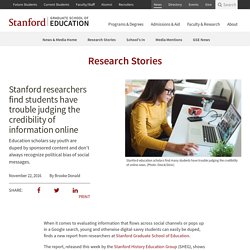
The report, released this week by the Stanford History Education Group (SHEG), shows a dismaying inability by students to reason about information they see on the Internet, the authors said. Students, for example, had a hard time distinguishing advertisements from news articles or identifying where information came from. "Many people assume that because young people are fluent in social media they are equally perceptive about what they find there," said Professor Sam Wineburg, the lead author of the report and founder of SHEG. "Our work shows the opposite to be true. " The researchers began their work in January 2015, well before the most recent debates over fake news and its influence on the presidential election. Navigating Digital Information. Truth, Lies and Quibblers: Media Literacy for a New Era. Don't Fall for Fake News. Your library offers workshops and resources to build media literacy.
Before fake news and alternative facts there was … The Quibbler and The Daily Prophet. Yes, I am talking about the wizarding world of journalism. Bear with me. For those who skipped the Harry Potter series, The Quibbler was Rowling’s storyline about a tabloid complete with sensational headlines, paparazzi and misleading (even fake) stories. Imagine if Harry Potter readers graduated to Book 7 having gained media literacy skills from the stories. Lest we blame J.K. Reality and Its Alternatives. Conventional wisdom has it that for democracy to work, it is essential that we—the citizens—agree in some minimal way about what reality looks like.
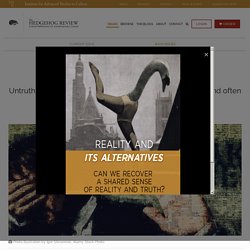
We are not, of course, all required to think the same way about big questions, or believe the same things, or hold the same values; in fact, it is expected that we won’t. But somehow or other, we need to have acquired some very basic, shared understanding about what causes what, what’s broadly desirable, what’s dangerous, and how to characterize what’s already happened. Some social scientists call this “public knowledge.” Some, more cynically, call it “serviceable truth” to emphasize its contingent, socially constructed quality. Either way, it is the foundation on which democratic politics—in which no one person or institution has sole authority to determine what’s what and all claims are ultimately revisable—is supposed to rest. Lately, though, even this low-level kind of consensus has come to seem elusive.
Headed for a Cliff The result? Deconstructing Disney. Detecting Bias. Infographic: Beyond Fake News - 10 Types of Misleading News - nine Languages. The work needed to effectively filter information in our media-saturated environment takes time and skill.

A study showed that the more content we consume, the more our ability to make decisions about its veracity becomes impaired. With 80% of Europeans now regularly going online, it is vital for the sustainable and effective functioning of democracy for citizens to be able to curate their media diets with a healthy critical eye. Our Beyond Fake News infographic identifies the 10 types of potentially misleading news. It was created to be used in class with real-world examples to spark classroom debate and reflection on the ways that media is constructed. We hesitated to put the term ‘fake news’ in the title of the infographic as, ironically, the term itself is a misleading simplification. Below this article, you will find a pdf version of the infographic as well as a dropdown list containing some resources for teaching the 10 Types of Misleading News.
The 10 types The motivations.
Questions for Young Children .pdf. QTIPS CHART. MediaLit Moments Activities for Fake News. Five Key Questions Form Foundation for Media Inquiry. Media Literacy Booster Pack. Eli Pariser: Beware online "filter bubbles". How to Escape Your Political Bubble for a Clearer View. Fake News - What's the Big Deal? The Making of Fake News: A Case Study. Trump Humiliated After ‘Bill Nye The Science Guy’ Explains Why He Is An Idiot. Home — News Literacy Project.
Get Smart Tools Archive — News Literacy Project. Is This Story Share-Worthy? Flowchart. GRADE LEVEL: Middle and high school TIME: Less than 30 minutes MATERIALS: Is This Story Share-Worthy? Flowchart, either printed on large paper or displayed digitally (download); Is This Story Share-Worthy? Worksheet (download); selections from Teacher Resource – Examples for Evaluating Online News (download); internet access Review the Is This Story Share-Worthy?
Ml worksheet news lit draft. Evaluating Sources in a ‘Post-Truth’ World: Ideas for Teaching and Learning About Fake News. News and Media Literacy Collection. Fake News and What We Can Do about It. Fake news lesson plan. How I Designed My Fake News Lessons Plans. I recently created a week-long unit designed to teach students about digital literacy in the age of fake news.

It’s just the kind of unit that I would have loved to have taught when I was in the classroom, but I never would have had the time to do all of the research that is involved. (See a preview of the entire product by clicking here and then clicking on preview.) Guest Lesson: Facts & Consequences of Fake News. How to Teach Your Students About Fake News - Lesson Plan. How to Protect Students From Fake News. For those raised in the information age, life without the internet is no life at all.
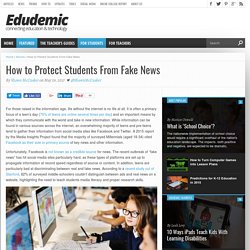
It is often a primary focus of a teen’s day (75% of teens are online several times per day) and an important means by which they communicate with the world and take in new information. While information can be found in various sources across the internet, an overwhelming majority of teens and pre-teens tend to gather their information from social media sites like Facebook and Twitter. A 2015 report by the Media Insights Project found that the majority of surveyed Millennials (aged 18-34) cited Facebook as their sole or primary source of key news and other information.
Unfortunately, Facebook is not known as a credible source for news. The recent outbreak of “fake news” has hit social media sites particularly hard, as these types of platforms are set up to propagate information at record speed regardless of source or content. Teaching Resources - BeMediaLiterate.com. Don't be fooled: Most Americans agree on abortion, guns, and other heated issues. D332LesleyFarmer. Home - Fake News - LibGuides at California State University Long Beach LIS.
A 2015 Pew Research Center report that millennials tend to get their news from social media.

During the latter part of the 2016 Presidential campaign, fake news was shared and commented more than real news, according to a Buzzfeed report. 75% of us fall for fake headlines, according to an 2016 Ipsos Poll. Almost a quarter of adults have shared a made-up news story, according to a Pew Research Center study. Annenberg Classroom. Factitious. Foiling Fake News. Slanted Facts and Slippery Numbers. Fake News - What's the Big Deal? Media Literacy. Quiz: What Cognitive Bias Are You? What Cognitive Bias are you?
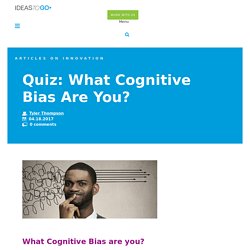
This short and intuitive Cognitive Bias Quiz will tell you your most prominent Cognitive Bias and supply you with the knowledge to beat your Bias and unlock a creative mindset. Click START below to find out! Cognitive Biases are our mind's shortcuts that play out in our everyday lives. They save our brain's energy and prevent us from having to critically think about every action we take. For example, when you are driving your car and see a red light, your foot automatically goes to the brake. During innovation, Cognitive Biases can get in the way. The 8 Major Cognitive Biases 1. What is it? 2. What is it? 3. The Fact-Checkers Who Want to Save the World. How do we teach students to identify fake news? In a “post-truth” era where people are increasingly influenced by their emotions and beliefs over factual information, fact and fiction can be difficult to distinguish, and fake news can spread rapidly through mainstream media sources and social networks.
Moreover, fake news is often meant to do harm, by tricking us into believing a lie or unfairly discrediting a person or political movement. Given this malicious intent, students must learn to approach news and information with a critical eye in order to identify intentionally misleading sources (although recent studies confirm that this is an uphill battle for both adults and young people). Teachers therefore play a crucial role in ensuring that their students develop the skills to decipher the many streams of information available to them. Schools fight spread of 'fake news' through news literacy lessons.